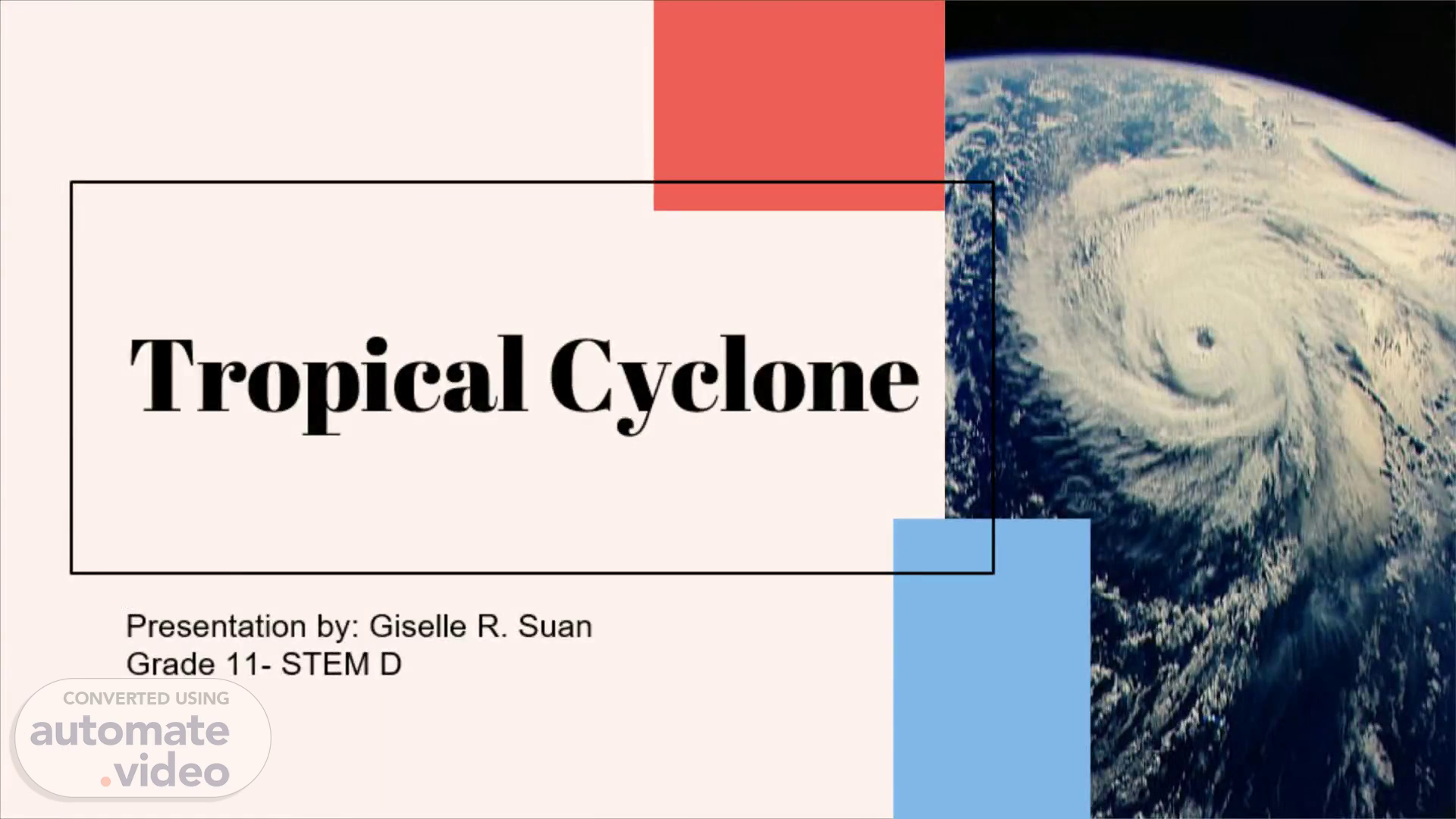Scene 1 (0s)
Tropical Cyclone. Presentation by: Giselle R. Suan Grade 11- STEM D.
Scene 2 (9s)
A tropical cyclone is a non-frontal, synoptic-scale cyclone that forms over tropical and subtropical waters at any level and has clearly organized circulation. In other regions of the world, depending on the region, these are known as hurricanes, typhoons, or simply tropical cyclones. They are known as "hurricanes" in the North Atlantic, Eastern North Pacific, and South Pacific Oceans ..
Scene 3 (31s)
Tropical Cyclone. Tropical cyclones are warm-core low pressure systems associated with a spiral inflow of mass at the bottom level and spiral outflow at the top level.
Scene 4 (49s)
MIS. Heavy rainfall Ocean Swells Increased windspead.
Scene 5 (58s)
Rain begins to fall approximately 18 hours before the storm. As the hurricane approaches land, the situation intensifies..
Scene 6 (1m 10s)
About three days before the hurricane hits, ocean swells will rise to size feet, with waves hitting the shore every nin seconds..
Scene 7 (1m 22s)
The wind speed will start around 11 mph and can increase to more than 100mph..
Scene 8 (1m 32s)
Tornadoes are tropical cyclone produced storms that are to be expected for roughly half of tropical storm strength storms...
Scene 9 (1m 44s)
Oceanic response to Tropical Cyclone. Tropical cyclones owe their existence to the release of latent heat in intense convection. This convection depends on eddy transfers of heat, moisture and momentum at the sea surface and radiative effects, as well as on the tropical-cyclone-scale circulation itself. The relationship between the ocean and the atmosphere during tropical cyclone conditions is not a one-way interaction.
